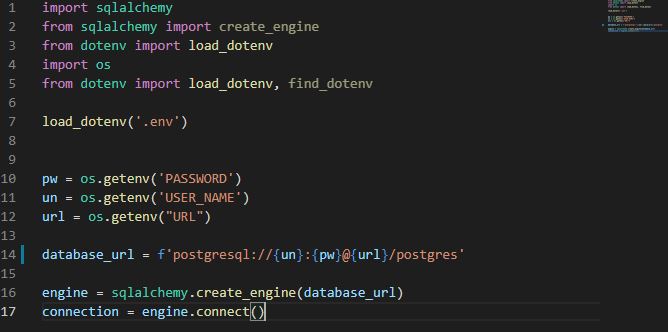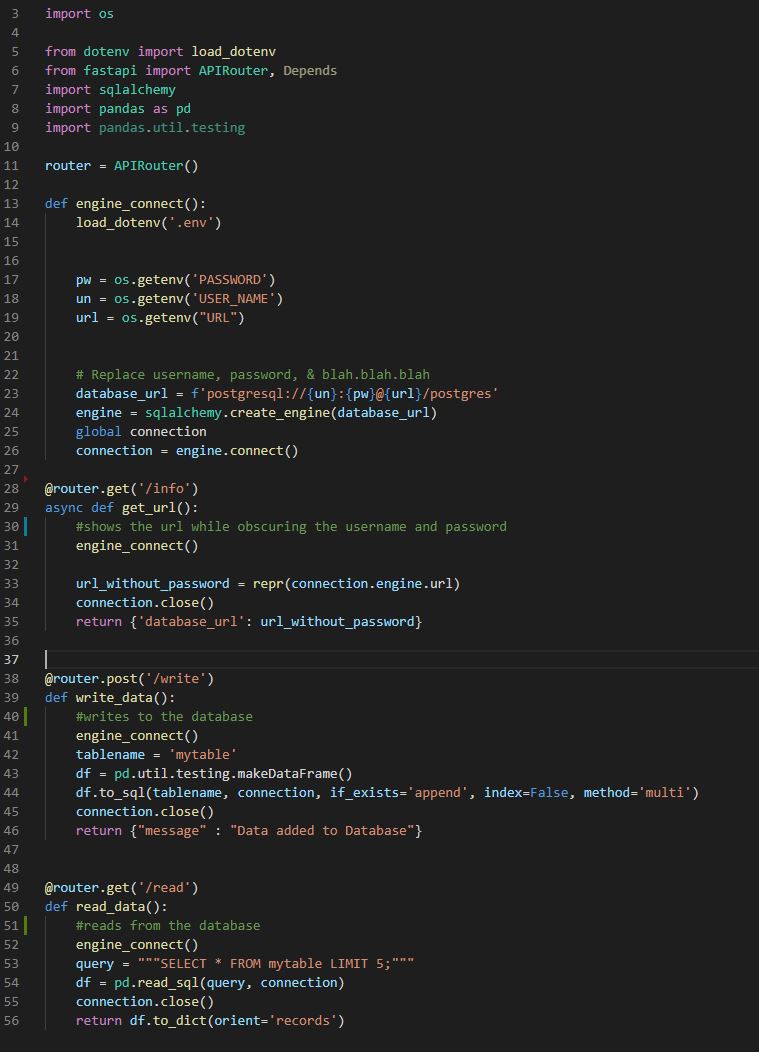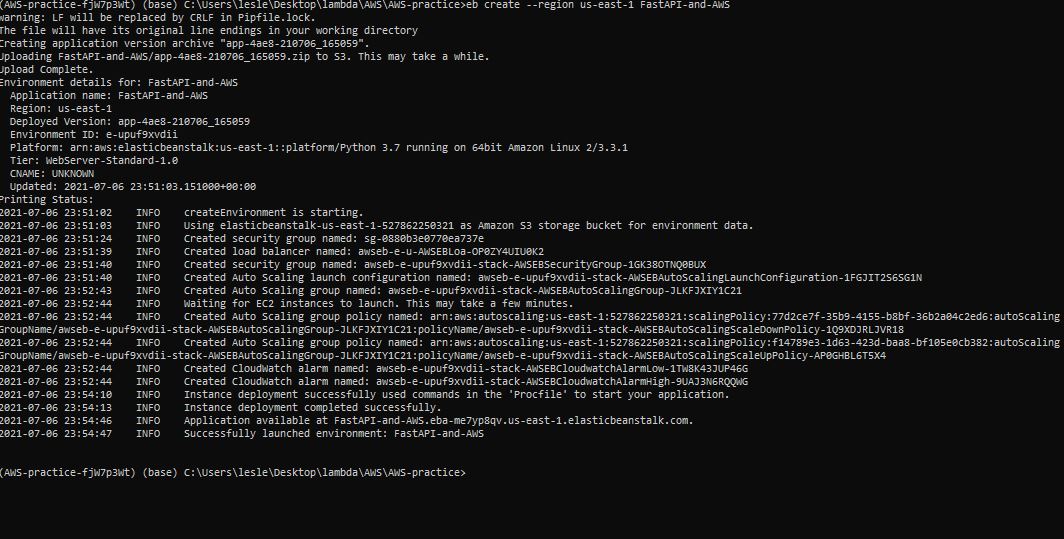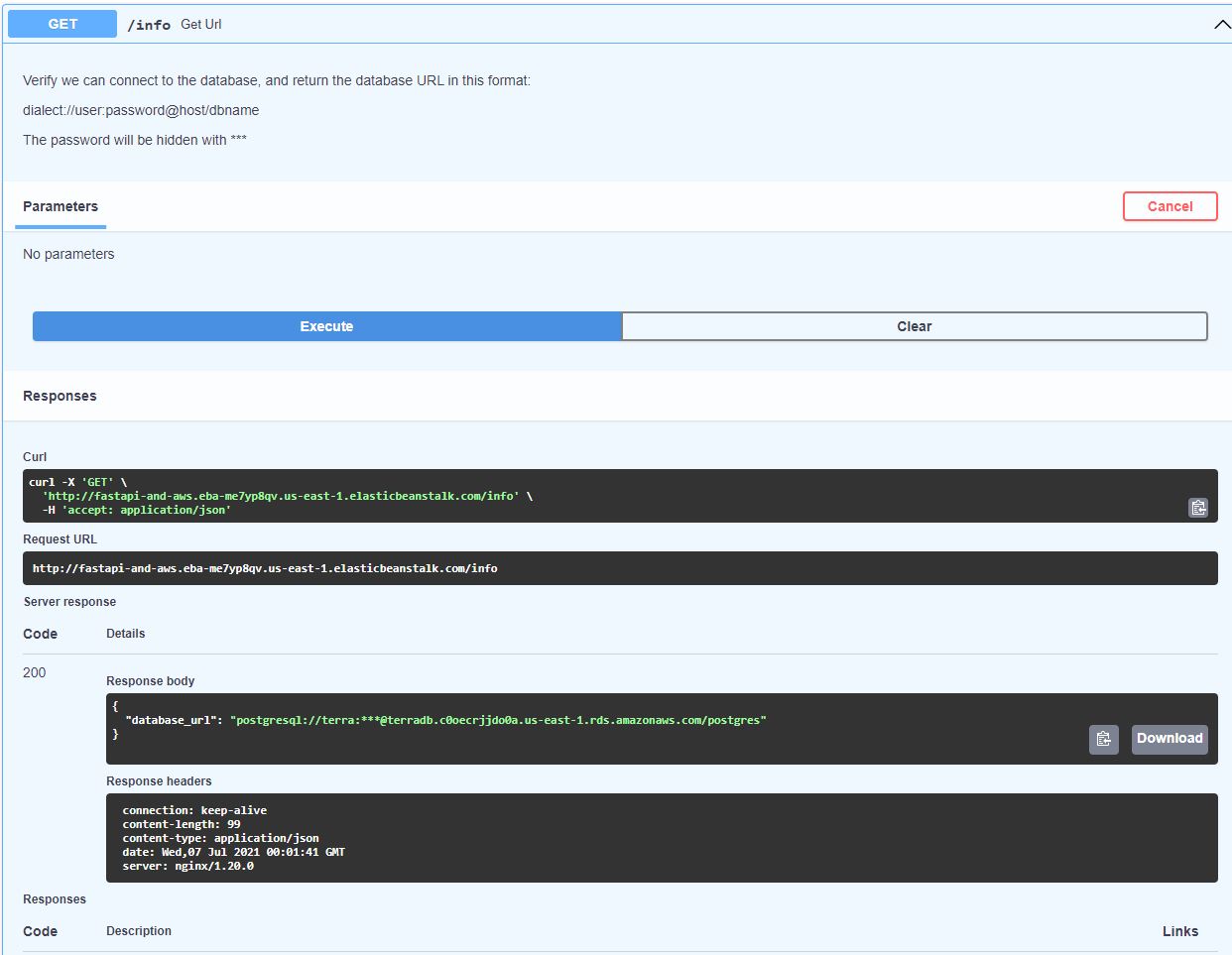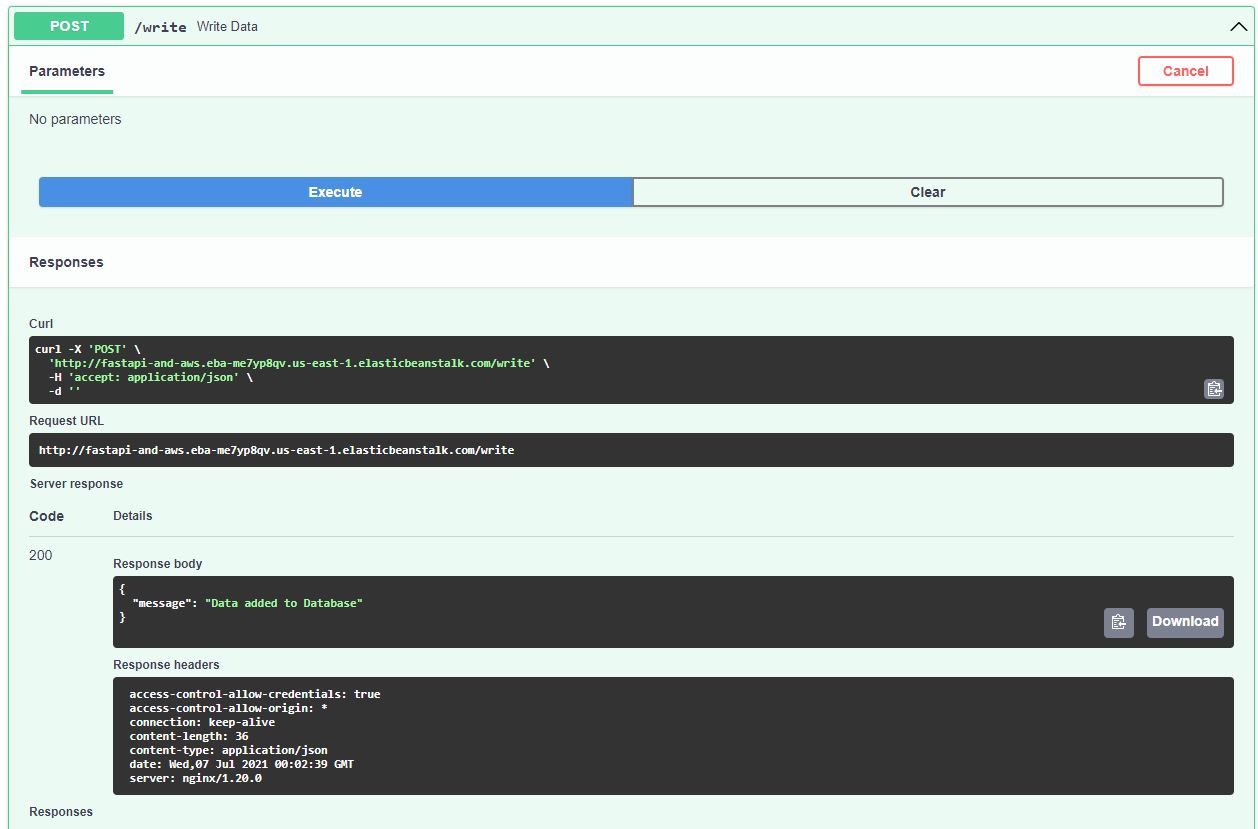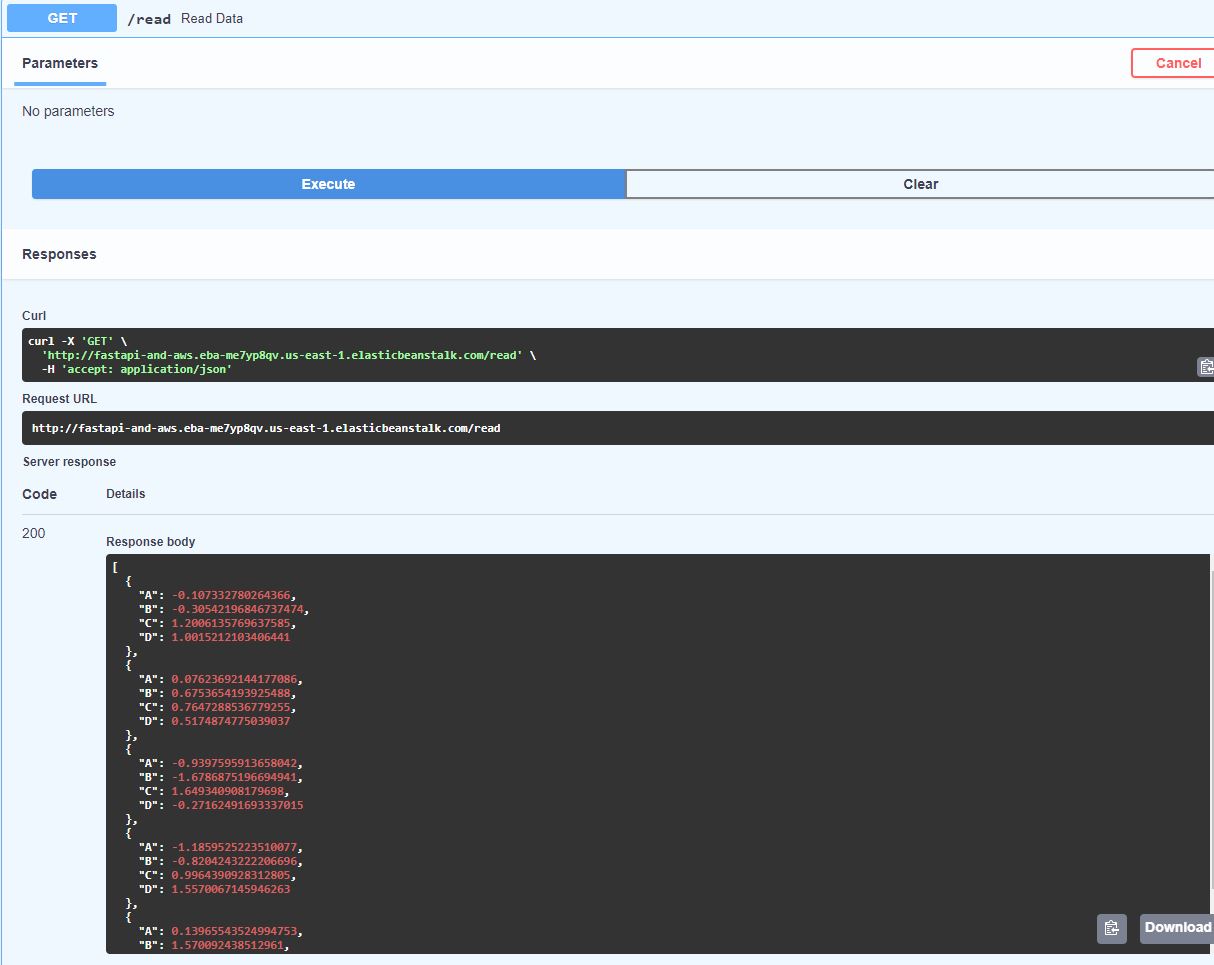First off, I wanted to get FastAPI running locally and using Amazon RDS, an AWS Postgres database, and so I got started on a simple connectivity script using environment variables, which basically is about hiding the username and password to the Postgres DB.
After I confirmed it was working I moved on to getting the Procfile and routes working. The Procfile used gunicorn for the API and I included all the app routes in a file called main.py. FastAPI was working so I moved on to getting the database routes made. I made a engine_connection function to be able to sign into the Postgres db and then close the connection when it was done with the specific task. There were three tasks I made: showing the url without the username and password, writing to the database, and reading from the database.
After I confirmed that this was all working properly I loaded the app to Elastic Beanstalk, an AWS application hosting tool. I made sure my pip environment had all the necessary installations and loaded it into Elastic Beanstalk.
Elastic Beanstalk worked and I was able to host FastAPI and use all the functions I had made once I added the environment variables to AWS.
The URL retrieval worked.
The writing to the database worked.
And finally reading from the database worked as well.
Everything was working properly so I deleted it from AWS because I was using AWS free tier to properly learn how to use it and I didn’t want to get charged for a simple application.
